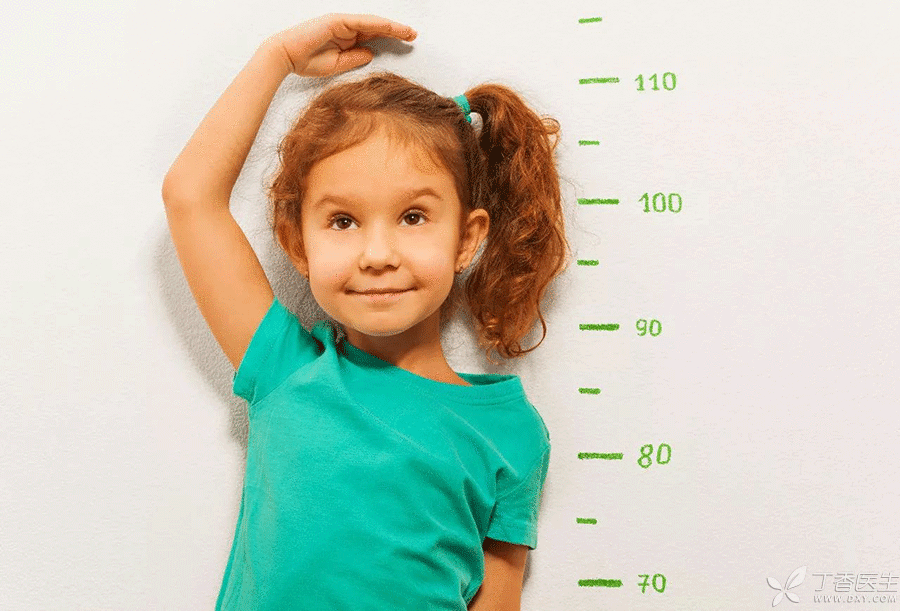
Children’s height is always the most concerned problem for parents:
My child is 2 years old and now 80cm. Is it high?
My husband and I are not short, but our children are half a head shorter than their peers. Can we grow taller in what?
Neither I nor the father of the child is tall, so I am worried that the child will not grow tall in the future.
Today, we invited a licensed teacher to tell us how to scientifically manage height.
How do you judge if the child is not tall?
Parents often don’t know how to judge whether their children are tall or not, especially when compared with the children around them, they always feel that their children are still not tall enough. How should the child be judged whether he is tall or not?
In fact, height and height are a set of relative concepts, and subjective judgment alone is meaningless.
Judging the real situation of children’s height should be compared with most normal children of the same race, age and sex.
Generally speaking, the growth rule of a child before the age of three is roughly as follows: (The following is the average height growth, do not force comparison, only for reference)
0 ~ 3 months: 3.5 cm/month
4 ~ 6 months: 2 cm/month
7 ~ 9 months: 1.5 cm/month
10 ~ 12 months: 1 cm/month
1 ~ 2 years: 10 ~ 11 cm/year
> 2 years: 4 ~ 7 cm/year
To sum up, the average baby under 3 years old has an annual height increase of about 7 cm/year, a height increase of 4 ~ 5 cm/year from 3 years old to puberty, and a puberty of about 5.5 ~ 6 cm/year.
Some parents will think that it is not timely to use the annual growth rate to judge the height of their children.
In addition to the annual growth rate, the growth curve is a very good tool to record the height changes of children.
Using this line, parents can clearly know whether the baby’s growth has [risen] or [fallen].
If you want your child to grow taller, you must hold on to the two golden periods.

Some parents will still ask, although there is no problem with the child’s size, but always want him to grow taller, is it possible?
In fact, the height of a child is not entirely determined by heredity, seven points are predestined, and the other three points depend on hard work.
In the process of height development, there are two [golden periods], namely, before the age of 3 and puberty:
Before the age of 3, the child’s height changes the fastest. After 3 years, it can grow about 45 cm, which can be said to be the same every day.
Girls start at the age of 10-12, boys start at the age of 12-14, and their height will suddenly increase during puberty. The annual growth rate can reach 7-8 cm per year, and the fast rate can reach 10-12 cm.
In order to make the child’s height break through the genetic limitation and grasp the [golden period] of the child’s height growth, it is necessary to scientifically interfere with the child’s height by using environmental factors.
Some parents will think that if their parents are not tall, their children will definitely not be taller. In the long run, they will gradually lose their attention to the height of their children.
On the contrary, some parents relaxed their attention to their children’s height because of their good height, or blindly believed some old sayings of “23 jumps and one jump”, resulting in missing a long [golden period].
Therefore, parents must not neglect the intervention on their children’s height during the [golden period] due to the limitation of inherent ideas.
Do a good job in these three points, so that the baby can break through the genetic growth and grow higher.

Recognizing that the existence of the golden period is not enough, only by mastering scientific intervention methods can children grow taller and get twice the result with half the effort.
1. Make your child eat right
Eating right is not enough to be full. Too fat or too thin a child is a sign of unbalanced nutrition, which may lead to a child not growing tall.
For babies before adding supplementary foods, it is very important to ensure the daily intake of milk for growth and development. Drink 600 ~ 800 mL of milk every day before the age of 1, and 300 ~ 500 mL of milk every day after the age of 1 year except supplementary foods.
After adding supplementary foods, priority should be given to red meat and animal viscera containing iron, vegetables rich in calcium and aquatic products with high zinc content.
In addition to ensuring the comprehensiveness of nutrients, attention should also be paid to vitamin D supplementation. Vitamin D above 400 IU per day can enable children to have better calcium absorption and promote children’s bone growth.
Children’s diet should be dominated by foods with high nutritional density.
Chicken soup, bone soup and other foods are not only limited in nutritional ingredients, but also high in calories. Excessive intake of such foods, children’s weight gain too fast, will put a burden on children’s bones, drag down the speed of children’s growth.
Although some growth-promoting health care products may make children grow faster in the short term, the hormone components contained in them will make the bone scale line of children close earlier, which will affect the final height of children in the long run.
Step 2: Let the children have a good time

Proper exercise can promote the secretion of growth hormone, so that children can obtain more protein synthesis and the whole body bones can grow better.
For babies aged 1 to 3 years old, at least one hour of outdoor activities should be guaranteed every day, and at least two hours should be guaranteed every day after the age of 3.
If you don’t have outdoor activities due to weather restrictions, you should also try to design some indoor games so that your children can have enough exercise.
For the baby in this period, stretching exercise and simple throwing and catching can well squeeze and stimulate the child’s bones and ligaments and help the child grow taller.
The World Health Organization believes that children and adolescents aged 5 to 17 should exercise at least three times a week, and one exercise requires at least one hour of moderate to high-intensity physical activity.
However, everything is too much to do. Overloaded sports will cause damage to the child’s growth plate. Long-term fatigue of muscles may also lead to a decrease in auxin secretion, which will not help the child grow taller.
Step 3 Let the child sleep soundly
The secretion of growth hormone is also regular.
During the day, growth hormone secretion is relatively small. The peak period of growth hormone secretion is 1 ~ 2 hours after the child falls asleep, and the secretion amount is about 3 times that of the day.
Therefore, adequate sleep is the premise to ensure the secretion of growth hormone in children. Only when children sleep enough can they grow taller.
Generally speaking, newborns only need to ensure 14-20 hours a day, 12-14 hours for 1-3 years old, and 11-12 hours of sleep for 4-6 years old.
There is really no shortcut to make children grow taller. It is indispensable to eat right, play well and sleep well during the [golden period] of growing taller.
There is only one time for children to grow and develop, so don’t have the mentality of “waiting again”. If you miss the growth and development period while waiting, then there is really no regret medicine.
